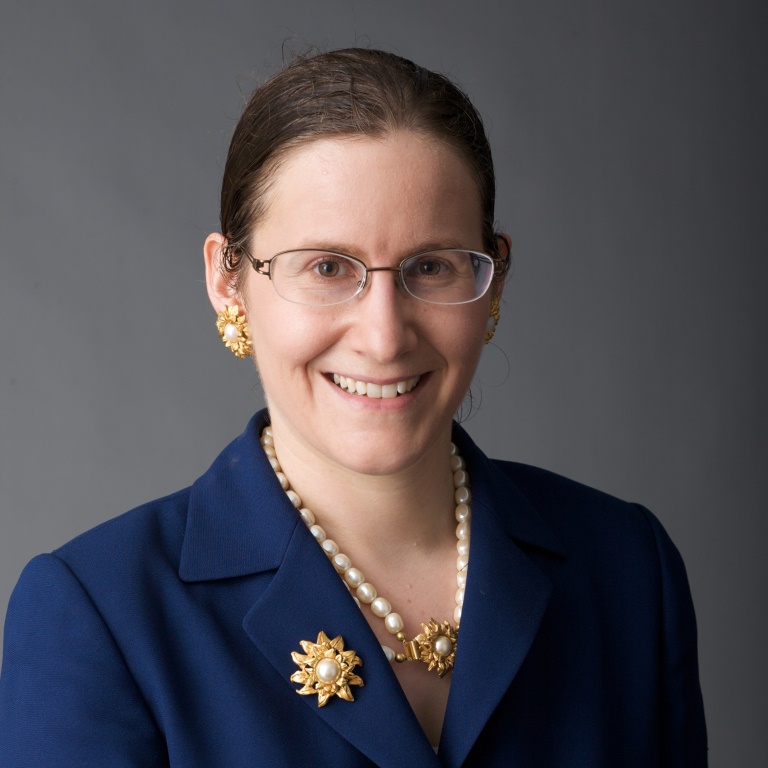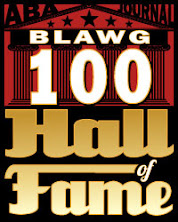Suchanek v. Sturm Foods, Inc., 2018 WL 6617106, No. 11-CV-565-NJR-RJD (S.D. Ill. Jul. 3, 2018)
I don’t know why this took so long to show up in my
searches, but: this is a consumer protection class action arising from Sturm’s
ill-fated decision to put instant (which it labeled “soluble”) coffee into pods
that fit into Keurig coffeemakers, to get a jump on the competition for nicer
ground coffee pods once the pod patent expired. This lawsuit was filed in 2011;
the district court dismissed it on the theory that consumers should have known
that “soluble” meant “instant,” and
the
court of appeals reinstated it, after which
a
class was certified on liability. Sturm didn’t take my unasked-for
advice of that last post; instead, it seems determined to litigate to the
bitter end, no pun intended.
Plaintiffs brought claims under the consumer protection laws
of Alabama, California, Illinois, New Jersey, New York, North Carolina, South
Carolina, and Tennessee. This opinion details the court’s trial plan dealing
with key elements of the claims.
Sturm waited seven years to raise a FDCA preemption argument
and did so in a few sentences; nope. The
court also emits a bit of impatience with Sturm’s re-raising of previously
rejected arguments. More generally, case
law about class certification establishes whether certain issues can be
resolved with class-wide evidence at trial. And the fact that the Seventh
Circuit said that “[e]very consumer fraud case involves individual elements of
reliance or causation” in its earlier opinion in this case does not mean that
class-wide proof is impermissible to establish reliance or causation under any
and all circumstances.
The parties agreed that individual proof was needed to show
causation under the statutes of Tennessee and South Carolina, but not on the
other laws.
The Alabama Deceptive Trade Practice Act, for example, bans
“[e]ngaging in any other unconscionable, false, misleading, or deceptive act or
practice in the conduct of trade or commerce.” The court found that causation
was clearly a required element: a deceptive act or practice is not actionable
unless the defendant’s conduct “causes monetary damage to a consumer ....” However, reliance could be presumed upon a
showing of material falsehood. Although
common law fraud requires individualized proof of reliance, the ADTPA was a
Little FTC Act intended to replace the common law and provide a stronger
remedy; the legislature also directed courts to look to the FTCA for guidance
in interpreting the law, and FTC practices supported a presumption of reliance
from material falsehood. Alabama bars
consumer class actions under the ADTPA, but that procedural rule is only
applicable in state court, not in federal courts governed by Rule 23; Alabama
also allows the AG to bring classwide claims. Thus, the court wouldn’t impose a
requirement to show justifiable reliance on an individual basis in order to
implement an anti-class action policy. “Plaintiffs are entitled to a rebuttable
presumption of reliance if they show Defendants made a uniform and material
misrepresentation to the class. Moreover, causation and reliance are “twin”
concepts that are often intertwined in the context of fraud.… Plaintiffs also
are entitled to a presumption of causation if they establish the elements
necessary for a presumption of reliance.”
California’s CLRA: “When the consumer shows the
complained-of misrepresentation would have been material to any reasonable
person, he or she has carried the burden of showing actual reliance and
causation of injury for each member of the class. As some courts have put it,
the plaintiff may establish causation as to each by showing materiality as to
all.” Unless “the record will not permit” that inference, as when a named
plaintiff testifies that she didn’t have the posited reaction to the claim or
where it was “likely that many class members were never exposed to the
allegedly misleading advertisement.”
Thus, inferences of causation, reliance, and injury arise under the CLRA
“where plaintiffs can establish that the defendants made a uniform and material
misrepresentation or omission to the entire class.” The UCL “is much more straightforward” and
doesn’t require individualized proof of deception, reliance and injury.
Illinois: ICFA claims require individual inquiries into
proximate causation, except that “where the representation being challenged was
made to all putative class members, Illinois courts have concluded that
causation is susceptible of classwide proof ...” Causation can be presumed if
there’s a uniform misrepresentation to all class members and “there is no other
logical explanation for the class members’ behavior in response to the
representation.”
New Jersey has applied a presumption of causation where a
misrepresentation was material, in writing, and uniformly made to each
plaintiff, and also where “all the representations about the product [were]
baseless.” The application of a presumption of causation also may depend on whether
plaintiffs could have known the truth behind the alleged fraud (why that is
relevant is not clear to me) and whether plaintiffs reacted to information
about the product in a similar manner.
New York doesn’t require reliance on a misleading act or
practice, but does require plaintiffs to show they suffered a loss because of
the defendant’s deceptive act. Causation can be shown class-wide “where the
misrepresentation or omission was uniformly made to the entire class, crucial
to the purchasing decision, and misrepresented the product’s very essence.” By
contrast, individual proof is necessary where the product had “a number of
characteristics that customers might value.”
North Carolina requires a showing of proximate causation,
which itself requires a demonstration of actual and reasonable reliance. “While
this inquiry may be difficult to conduct on a class-wide basis, the Supreme
Court of North Carolina has held that circumstantial evidence may be sufficient
for a factfinder to infer reliance.” For example, a material misrepresentation
that went to the sole point of the product could justify a class-wide finding
of causation, as could a sufficiently material misrepresentation uniformly made
to the class.
The court concluded that the target consumers, Keurig owners,
faced a “more-or-less one-dimensional decision making process” when they
purchased the accused product. They hoped to buy single-servings of premium, ground coffee they could brew in their
Keurig machines. “There is no other logical explanation as to why consumers
would purchase instant coffee, at a premium price, in a K-Cup, that they had to
brew.” It doesn’t make sense to buy a product three or four times more
expensive than typical instant coffee to use a specialized machine to heat
water for instant coffee. “This is simply not a case where the plaintiffs had a
number of reasons for purchasing” the product.
The allegations were of a complete misrepresentation of
instant coffee as ground coffee, “obviously crucial to Plaintiffs’ purchasing
decisions as Keurig owners.” There was no evidence that plaintiffs would have
purchased the product even if they “knew the truth” about the product, or that
any significant part of the class had access to all the information they needed
before they bought. “Here, numerous experts conducted surveys and concluded
that few consumers understood that GSC [the product] contained instant coffee
at all based upon either the initial or modified packaging. Even if some
consumers did understand GSC consisted of instant coffee, they had no way of
knowing GSC was actually more than 95% instant coffee.” The record also showed a virtually unanimous
reaction: “a uniform outpouring of dissatisfaction with the product…. Essentially,
Plaintiffs received a useless product.”
Ultimately, though a jury would determine deceptiveness and
proximate causation of injury, it could do so on a class-wide basis, without
individual inquiries.
The court reasoned similarly with respect to how plaintiffs
could show ascertainable loss under the relevant state laws. Where plaintiffs allege that they bought a
product at a price greater than a truthfully advertised product could have
charged, class-wide evidence can establish injury. Plaintiffs offered both a refund model (they
bought a valueless product, since they did not want ground coffee at all) and a
price premium model for showing damages, both of which the jury could
consider. For states providing statutory
damages—Alabama and New York—those models could also establish
damage-triggering injury (both states require a showing of some damage before
awarding statutory damages). Here, the
plaintiffs’ injuries didn’t vary from person to person; “the focus is on what
the defendants said on their packages and whether the product is different from
what was promised.”
The court thus indicated its intent to subclass based on the
initial and modified packages, further divided by state law. The first planned jury trial would be
bifurcated. The first part would assess
whether defendants committed a deceptive act or omission that would be
materially misleading to a reasonable consumer. If the jury so found, the court
would then decide whether those acts were materially deceptive under North Carolina
law (which treats whether acts are unfair or deceptive as a question of law)
and California law (because UCL and FAL claims are equitable in nature). The
jury would then answer the same question for the remaining state subclasses. If the jury said yes, it would proceed to
answer questions about whether the conduct occurred in the course of trade or
commerce [that one seems a gimme]; whether the conduct affected the public
interest; whether the non-Tennessee/South Carolina/California classes suffered
injuries/damages/ascertainable losses in reliance on, or as a proximate cause
of, the deception; and whether defendants intended for that last group to rely
on their deceptive acts or omissions. A second jury trial would then determine
the remaining elements of ascertainable loss, proximate cause, and damages for
the Tennessee and South Carolina subclasses.
















